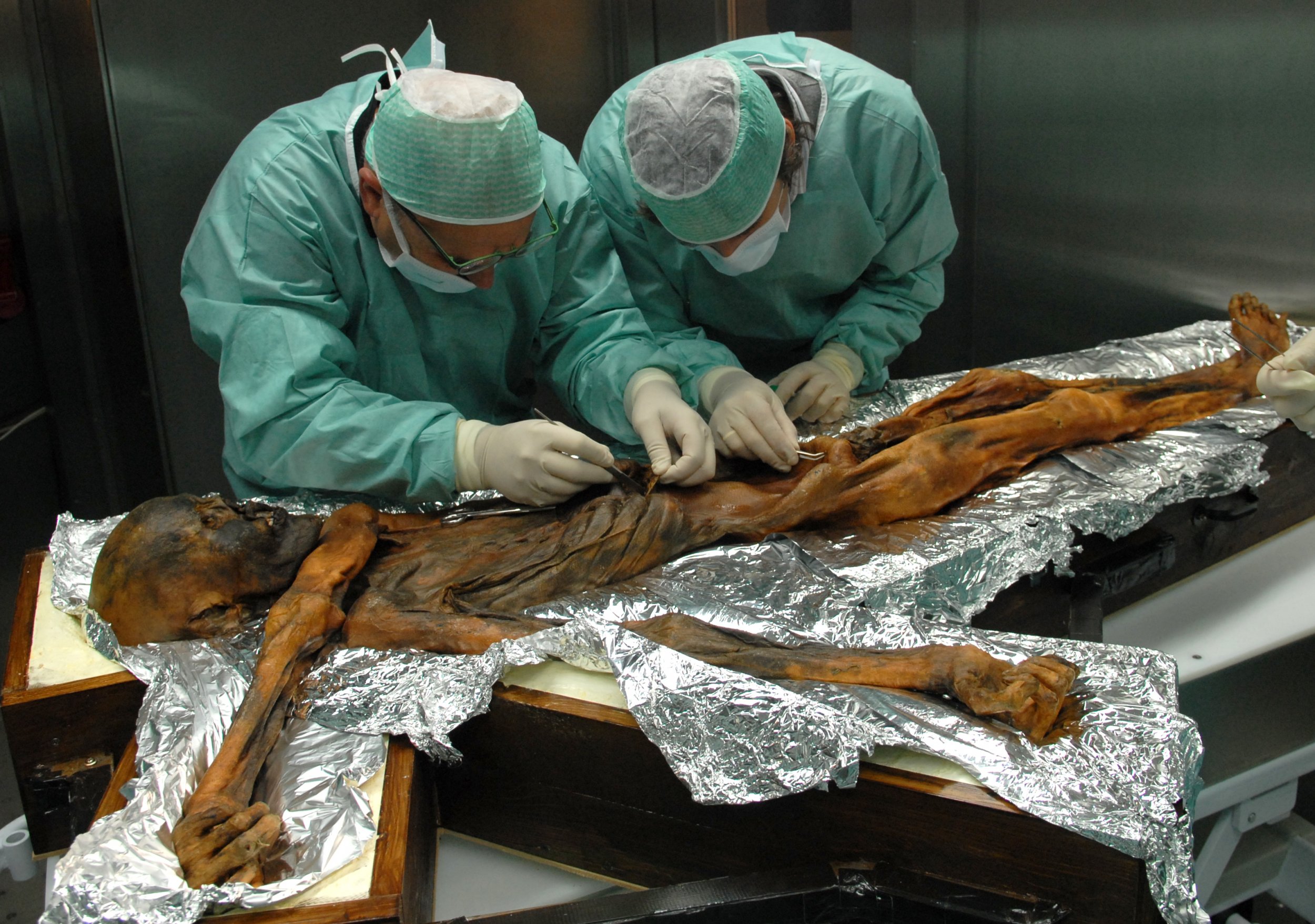The 5,300-year-old Ötzi the Iceman, a remarkably preserved natural mummy, was discovered approximately 30 years ago in the Ötztal Alps, near the border between Austria and Italy. This ancient mummy, known for its impressive state of preservation, possesses a collection of tattoos that hold significance in terms of healing and religious practices.
The Enigmatic Tattoo System of the 5,300-Year-Old Mummy

The 5,300-year-old Ötzi the Iceman is not only the most famous mummy in Europe but also one of the most significant discoveries for global historians studying the art of tattooing, according to CNN.
With 61 well-preserved tattoos, Ötzi’s body offers a captivating glimpse into the ancient world of body art. The meaning behind these tattoos has been a subject of debate ever since the mummy was stumbled upon by two hikers. Many of the tattoos are found in areas such as the lower back, knees, wrists, and ankles—locations on the body that commonly experience chronic pain with age. Some researchers believe that the tattoos on Ötzi’s body served as an ancient form of pain relief. The discovery of various medicinal herbs near the site where Ötzi was found further supports this hypothesis and adds credibility to the idea.

However, not all of the famous mummy’s tattoos are located in areas associated with joint pain. Ötzi also bears tattoos on his chest. Through advanced imaging techniques in 2015, scientists hypothesized that these chest tattoos were connected to early healing rituals and eventually became part of a ceremonial or religious system, according to Allison Hawn, a researcher from Arizona State University, USA. CNN notes that the true meaning behind the tattoos on Ötzi’s body remains a mystery. Nevertheless, Ötzi’s remains serve as an important reminder that tattoos have long been and continue to be a sacred part of numerous cultures worldwide.
Ancient Tattoos Around the World
The mummified remains of a woman in Egypt, dating back to 2000 BC, displayed tattoos. Additionally, carvings and painted scenes in tomb murals and small sculptures depict women with tattoos that date back to 4000-3500 BC.

In both of these cases, the tattoos consist of a series of dots, often forming a mesh-like pattern on the women’s abdomens. There are also tattoos of the Egyptian goddess Bes, the protector of women during childbirth, found on the upper thighs of women. These ancient tattoos were considered talismans, serving as protective charms for expectant mothers.
The Greek historian Herodotus discussed how runaway slaves at Canopus voluntarily tattooed themselves to hide the marks left by their former owners and express their devotion. These new tattoos were often meant to signify that these men and women no longer served as slaves in the earthly realm but instead were devoted to a particular deity.

Ancient reliefs of Quetzalcoatl, the Aztec god of wind, air, and learning, are also often depicted with tattoos. The Aztecs themselves practiced tattooing with religious significance, performed by priests. West African nations like Togo and Burkina Faso also utilize tattoos in sacred ceremonies.
The Maori people of New Zealand have practiced the art of Tā Moko tattoos for centuries. These tattoos, still performed to this day, carry profound cultural and historical significance. They not only represent social status, family identity, and personal achievements but also possess spiritual meaning, serving as protective talismans and invoking the guardian spirits of the tattooed individuals.

The 5,300-year-old Ötzi the Iceman and the diverse range of tattoos found on his body provide an intriguing insight into the ancient practice of tattooing. From ancient Egypt to the Aztecs, tattoos have played a significant role in various cultures throughout history. They have served as symbols of healing, protection, devotion, and cultural identity, reinforcing the sacred and timeless nature of this ancient art form.
